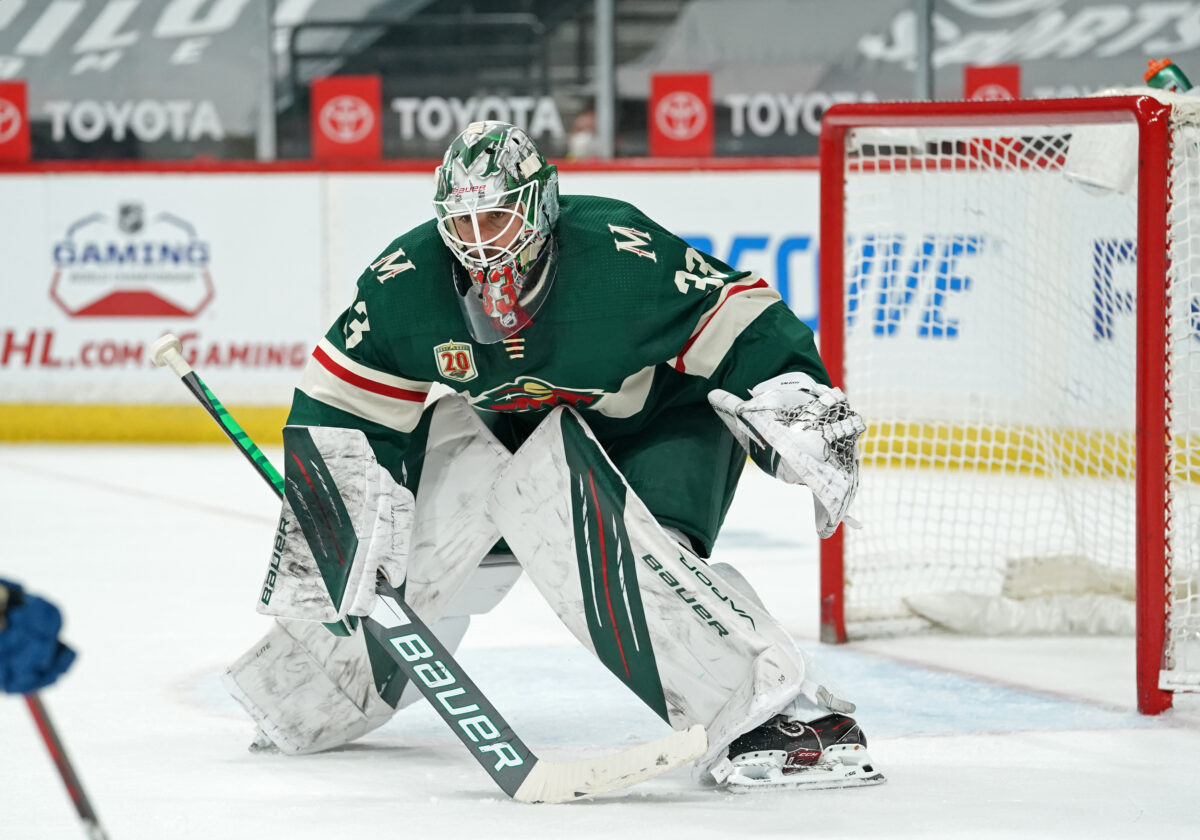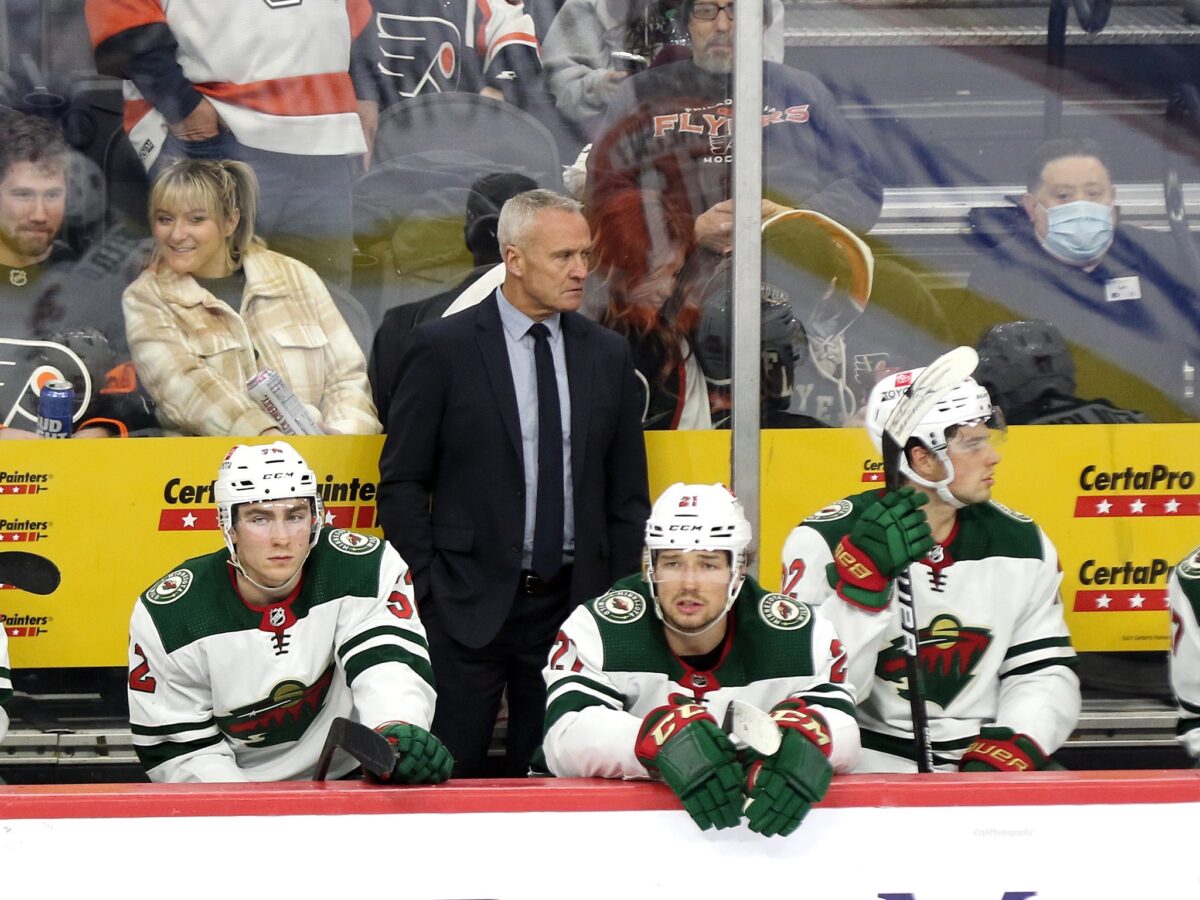The 2022 NHL Trade Deadline is quickly approaching on Monday, March 21. Although the Minnesota Wild have made some smaller moves throughout the campaign, there’s still room to improve the roster. They currently have a 35-20-4 record, which is good for 74 points and the third-place spot in the Central Division. Having said that, their position is far from secure and a late-season slump could easily have them falling out of a playoff spot.
Wild general manager (GM) Bill Guerin has said that the team “can’t trade (their) way out of problems” (from ‘Wild GM Bill Guerin isn’t trying to fix anything: ‘You can’t trade your way out of problems,’ Twin Cities Pioneer Press, March 17, 2022) and has been adamant about Minnesota potentially staying quiet at the deadline. The Wild are set to deal with a cap crunch next season due to Zach Parise and Ryan Suter’s dead cap space kicking in, so the window to make a potentially deep playoff run could be now.
With the Wild still needing to improve some aspects of their game, here’s a look look at three areas Guerin should try and improve ahead of Monday’s NHL Trade Deadline.
Wild Must Find a Veteran Backup Goaltender
It’s no secret that the Wild’s goaltending has been shaky at times throughout the 2021-22 season. Although Cam Talbot and Kaako Kahkonen can steal a game on any given night, there have been several occasions where they’ve left the fanbase frustrated. Guerin may have expressed loyalty to his players and that’s a quality worth having in a GM, but reliable goaltending also wins championships.
Related: Wild Have 3 Goalies to Target Ahead of Trade Deadline
Talbot has done a decent job as the team’s starting goalie, however, he’s been fairly inconsistent since late December. He’s 8-6-0 in his last 15 appearances (14 starts), recording a 3.48 goals-against average (GAA), .885 save percentage (SV%) and a shutout over that stretch. Meanwhile, Kahkonen has also been struggling. He hasn’t won a game since Feb. 20 and is 0-5-1 in his last six starts, putting up a 3.87 GAA and .873 SV% in that time.

With Guerin unwilling to make a big deal, it’s unlikely (although, not impossible) that he’ll trade for one of the bigger available names like the Chicago Blackhawks’ Marc-André Fleury. Keeping that in mind, there are cheaper options if the Wild are interested.
The Ottawa Senators will likely field a lot of calls regarding Anton Forsberg. Despite their lack of success this season, the 29-year-old netminder has an impressive .927 SV% and 2.56 GAA in his last 12 games. Even though that isn’t the biggest sample size, he’s proven to be consistent in goal more often than not. There’s also the Buffalo Sabres’ Craig Anderson. He may be approaching his 41st birthday this year, but Anderson is a proven playoff goalie, having gone 21-18 in 40 postseason appearances with a .928 SV%, 2.30 GAA and three shutouts.
Barring any setbacks, Talbot will be the Wild’s starter to close out the season. Kahkonen’s status, on the other hand, is up in the air. Until he proves otherwise, he just isn’t as reliable as he was earlier in the year, leaving his team in serious trouble if Talbot gets injured down the stretch. Even if Guerin isn’t willing to let go of Kahkonen just yet, bringing in a third goaltender will ensure that the Wild have stability at the position for the rest of the year.
Wild Must Add a Center Who Can Win Faceoffs
One area that the Wild have struggled with in recent years is their ability (or rather, inability) to win faceoffs. That trend has continued into the 2021-22 NHL season where they’re averaging a 47.2 faceoff percentage (FO%), which ranks third-worst in the NHL. Although the league-leading Colorado Avalanche actually trail the Wild at 46.8 percent (No. 31), that doesn’t mean that Minnesota should be content with what they have.
Before the Wild traded him to the Avalanche this past week, Nico Sturm was their only player to have a faceoff rating above 50 percent while taking at least 300 draws. Although added center depth through the trade by bringing in Colin Jost, his 39.4 percent success rate doesn’t exactly help the issue at hand.

One name worth exploring at the trade deadline is Montreal Canadiens’ center, Christian Dvorak. Despite injuries limiting him to just 35 games this season, the 26-year-old continues to be one of the more reliable players in the faceoff dot. He has a 56.2 FO% this season, having won 270 of his 617 draws. It’s not like that statistic is an outlier either, considering he boasts a 51.5 FO% in 302 career games played.
TVA’s Renaud Lavoie recently reported that the Wild are one of the teams interested in Dvorak’s services. The only potential issue is that he has three years after this season remaining on his contract which is worth an average annual value (AAV) of $4.45 million. That hasn’t stopped teams from calling the Canadiens about his availability, it might require them to retain some of his salary in a trade to the Wild due to the latter’s cap crunch next season. Still, it’s an option worth exploring if Guerin and company are dead set on improving the organization’s issues down the middle.
Wild Must Improve Penalty Kill
A reliable special teams unit is another key for any team hoping to go on a deep postseason run. Although the Wild’s power play has shown flashes of brilliance throughout the year, the penalty kill has been pretty awful. They’ve killed just 75.8 percent of their penalties this season, which ranks them eighth-worst in the NHL.
The Wild’s penalty-killing woes have been further exemplified in their last 20 games. They’ve killed just 66.1 percent of their penalties during that stretch, which is second-worst league-wide. Considering how lowly teams like the Seattle Kraken, Philadelphia Flyers and Arizona Coyotes rank ahead of them in that span, it’s safe to say that improvements must be made.
Related: Revisiting Minnesota Wild Drafts – 2017
Adding Jost this week certainly helped the issue to a degree. He’s played just under 113 minutes on the penalty kill this season and even has an 89.7 FO% in 4-on-5 situations. Having said that, the Avalanche’s goaltenders only had a .807 SV% when he was on the ice in all penalty-killing situations, which doesn’t exactly prove that he’s the sole solution that the Wild have been looking for.

Senators’ center Nick Paul is a decent penalty killer who could help Minnesota down the stretch. He’s versatile enough to play as a wing or center, although, his 49.0 FO% shows that the Wild might be inclined to use him in the latter role. Nevertheless, he does boast a team on-ice SV% of .883 while shorthanded. Plus he’s set to become an unrestricted free agent (UFA), so he won’t break the bank for Guerin.
If the Wild don’t want to add a forward, a veteran defenseman like the Philadelphia Flyers’ Justin Braun could be a target. Even at the age of 35, he still brings a lot to the table. When he’s been on the penalty kill this season, the Flyers have boasted a 98.3 percent short-handed shooting percentage plus SV% (PDO) rating, which is his highest since the 2016-17 season. Also an expiring UFA, Braun brings some postseason experience with him, having played in 100 games over his career and that includes a trip to the Stanley Cup Final in 2015-16. The Wild have had injury issues on the back end throughout the season, so trading for Braun would provide them with defensive depth as well as penalty killing help.
Regardless of how the 2022 NHL Trade Deadline plays out, it’ll be interesting to see what Guerin and management do. He’s made some great points about not wanting to pull off trades for the sake of it, but there’s going to come a time when he has to go all-in. Maybe this isn’t the season to do that just yet, however, the cap crunch that begins next season is going to make it tough to go all-in down the line. If he gets the chance to improve any of the team’s goaltending, faceoff or penalty kill situations come Monday, it might be time for him to finally be a serious deadline buyer.